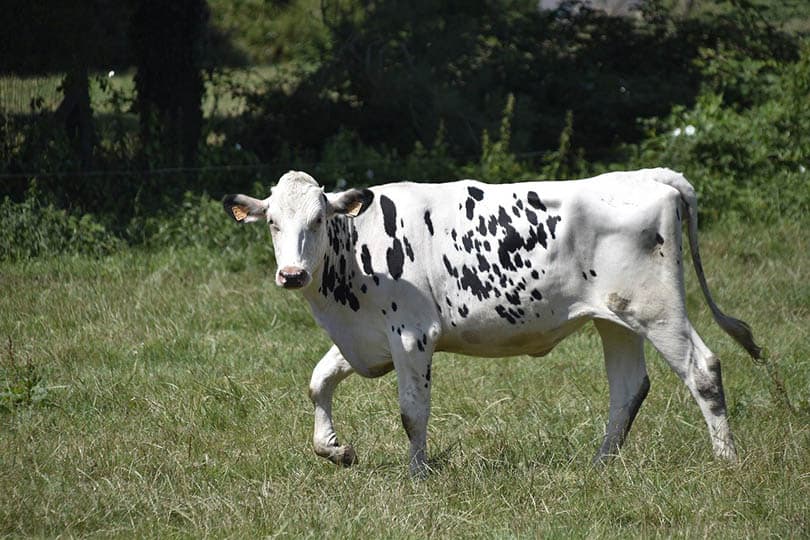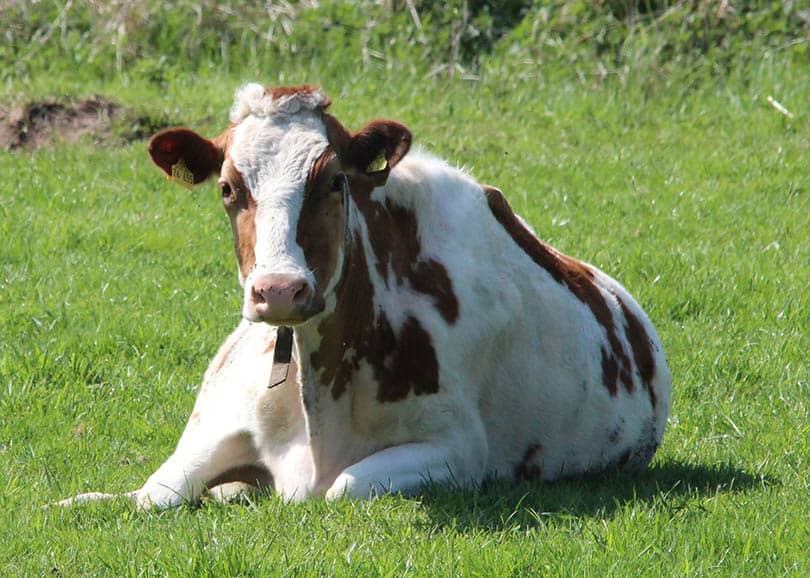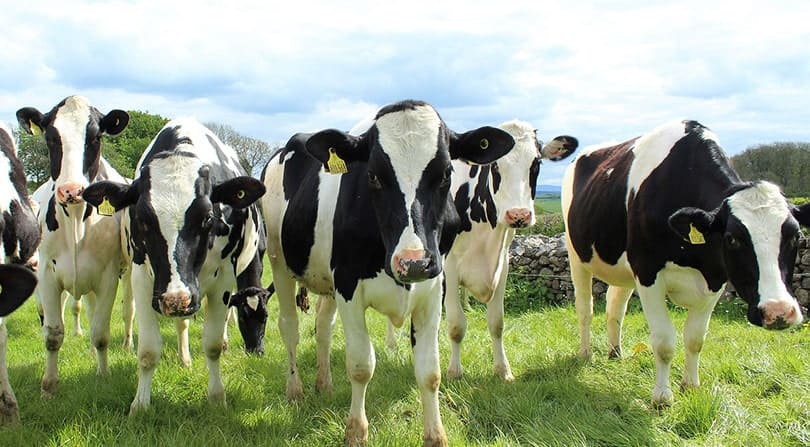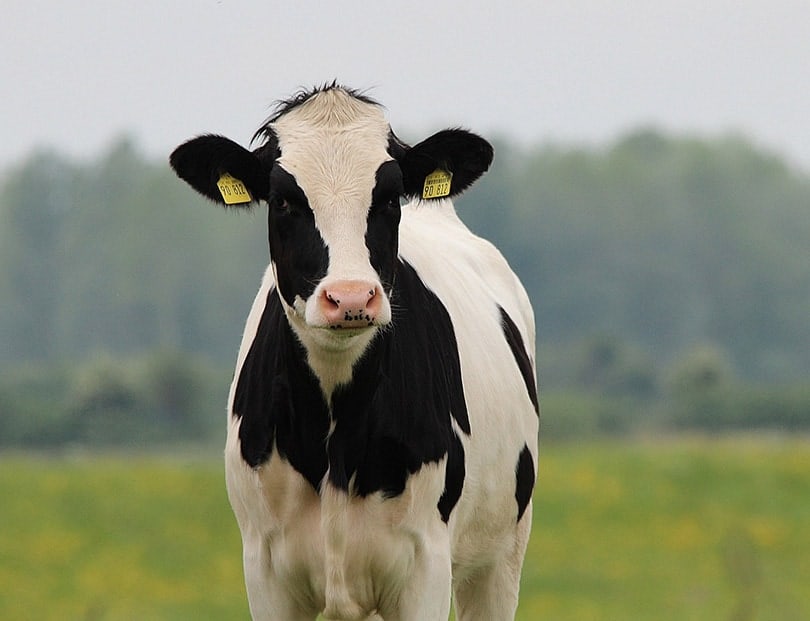The most popular dairy cattle breed in the world, Holsteins produce the majority of the milk enjoyed daily by humans. They are the stereotypical cow featured in commercials and children’s books alike, known for their familiar black and white coloring. You may see them everywhere, but how much do you really know about these most common of cows? Keep reading to learn all about the Holstein, including whether they are a good choice of cattle breed for a small homestead farm!

Quick Facts About The Holstein
| Breed Name: | Holstein |
| Place of Origin: | The Netherlands |
| Uses: | Dairy |
| Bull (Male) Size: | 6 feet tall, 2500 pounds |
| Cow (Female) Size: | 58 inches tall, 1500 pounds |
| Color: | Black and white, red and white |
| Lifespan: | 15-20 years |
| Climate Tolerance: | Heat decreases milk production |
| Care Level: | Easy |
| Production: | 9 gallons milk/day, 2,674 gallons/year |
Holstein Origins
Holstein cattle1 were originally developed in the Netherlands. They are believed to descend from cows kept by two migrant tribes, the Friesians and the Batavians, who settled in the area about 2,000 years ago.
Holsteins were first brought to America in 1852 by a Massachusetts dairy farmer. About 8,800 Holsteins were eventually imported from Europe before American farmers struck out on their own and created the first U.S. breed association and breeding programs.

Holstein Characteristics
Holsteins are the largest breed of dairy cows, regularly weighing in at 1,500 pounds or more. The females usually weigh about 800 pounds when they are first bred at 15 months. Calves weigh about 90 pounds when they’re born about 9 months later.
Holstein calves are hardy, grow quickly, and are easy to care for. Overall, the breed is known for their adaptability, tolerating a range of living conditions. However, they are not as tolerant of heat, which can impact both their milk production and their fertility. In the United States, breeding programs are underway to create a more heat-tolerant Holstein2.
Temperament-wise, Holsteins are known to be easy to handle and good-natured cattle who usually don’t get stressed. They are herd animals by nature, happiest in the company of their fellow bovines.
The defining characteristic of Holsteins is their high milk production, although their milk has less fat and protein than that of other dairy breeds. In fact, the cow who holds the world record for milk production is a Holstein. This mighty heifer churned out 78,170 pounds, or 9,090 gallons of milk in one year back in 2017.
Uses
Traditionally, Holsteins are used exclusively as dairy cows. The breed makes up 90% of the dairy cattle stock in the United States. However, Holsteins can also be used for meat, particularly veal. Young Holsteins pack on weight quickly, another plus for meat producers. Often, Holsteins are crossbred with beef breeds of cattle to improve their meat quality.

Appearance & Varieties
In physical appearance, Holsteins are one of the most easily recognizable breeds of cows. Most Holsteins are black and white, with varying amounts of each color present on their body. The cows can be mostly black, mostly white, or a mix of the two.
Red and white Holsteins are also possible, again with cows being mostly red, mostly white, or more of an even mix of colors. This coloring is caused by a recessive gene, meaning both the cow and bull must be carriers to produce a red and white calf.
Population
Of the just over 9 million dairy cows in the United States, approximately 90%, or 8.1 million, are Holstein cows. Thanks to their adaptable nature, Holsteins are raised in 150 countries around the world. There are about 250 million dairy cows worldwide, with the vast majority being Holstein cows.
Holsteins are raised in all types of climates. They thrive whether housed full-time in pastures or barns.

Are Holsteins Good for Small-Scale Farming?
Holsteins are an excellent dairy breed for both small farms and large industrial farms alike. Part of their early development as a breed focused on creating a cow who would produce the most milk on the least amount of food possible. This efficiency allows small-scale farmers to get the most milk production out of their Holsteins with minimal cost.
Holsteins can also be kept either at pasture or full-time in a barn. They adapt well to either scenario, making them easy to raise regardless of the amount of space available.

Conclusion
The next time you give yourself a milk mustache, you’ll know a little more about the cow who made the experience possible. Holsteins are one of the most important cattle breeds in existence and play a vital role in the health and livelihood of humans worldwide. Researchers and breeders are constantly striving to improve the genetics and health of these animals to ensure they will be around to make milk for many years to come!
Featured Image Credit: 127071, Pixabay
